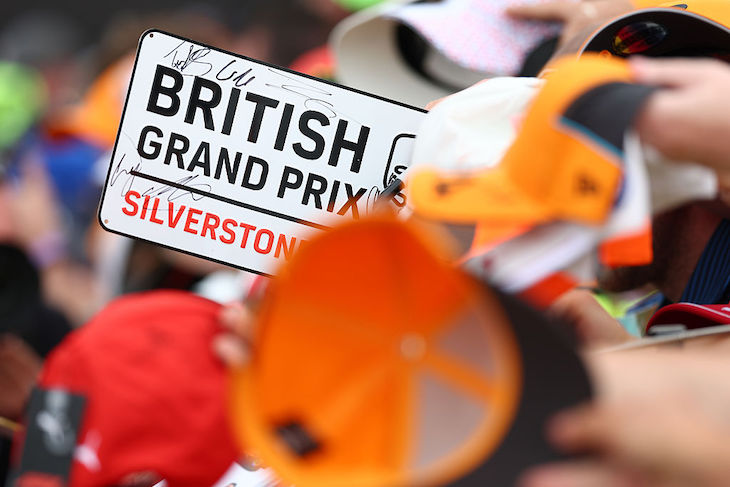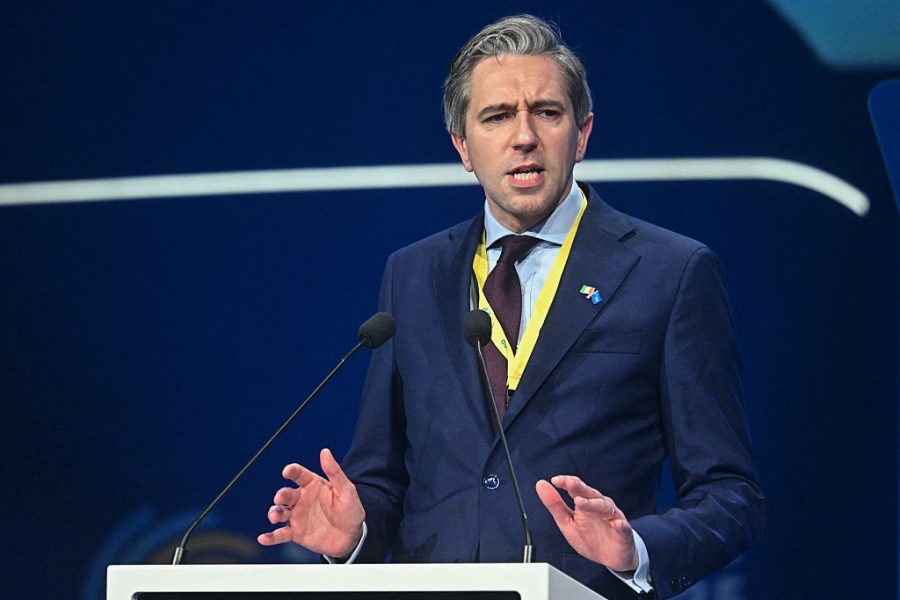This weekend, Formula One returns to where it all started 75 years ago: Silverstone. But although the first F1 Grand Prix took place in the UK, the sport was initially dominated by Italian cars and Latin drivers, rather than Brits. Dottore Giuseppe Farina, a lawyer turned racing driver, won that first F1 race in front of King George VI. Driving an Alfa Romeo 158, Farina went on the win the championship. For the next seven years, Alfa Romeo, Ferrari and Maserati swept all before them.
Did British dominance of F1 come only from European teams’ exit from the sport?
It was in this era that the legend of Enzo Ferrari and his team – the only one to participate in every F1 championship since inception – was established. Ferrari, a taciturn workaholic, opined to the Times that ‘racing is a great mania to which one must sacrifice everything’. Contemptuous of aerodynamics, he believed that it was engines that won races: ‘I don’t sell cars; I sell engines. The cars I throw in for free since something has to hold the engines in.’
But while Ferrari met with early success, it nearly all came crashing down.
Given that in the early days only the rich had cars, it was perhaps not surprising that the sport was largely amateur with a pool of wealthy racing drivers mixed with a sprinkling of working-class mechanics. The wealthy drivers were risk takers. Marquis Alphonso de Portago, a playboy Spanish aristocrat named after his godfather, King Alphonso XIII, was typical of the breed. At the age of 17, he won a bet flying his plane under London’s Tower Bridge and twice jockeyed horses at the Aintree Grand National. But motor racing was his first passion.
It was driving the Mille Miglia (a race on public roads) in 1957 that Portago came to his untimely, but not surprising, end. After a scheduled stop where he was photographed being kissed by his mistress, Hollywood actress, Linda Christian, his Ferrari punctured on a straight road between Brescia and Mantua. His car arrowed into spectators, nine of whom died, including five children. Portago was found beneath the car; he had been sliced in half. The impact of the crash was more than physical; because of the tragedy, Maserati dropped out of motor racing; Ferrari continued.
However, the consequences were almost fatal to Enzo Ferrari’s business. He was prosecuted for manslaughter and condemned by the Catholic Church. Acquittal did not change his unyielding approach to motor sport. A brutal manager, Ferrari – a devout Catholic – was sentimental about his drivers, but only when they were dead.
By contrast with Ferrari, Mercedes Benz’s team did not survive a tragedy after their post-war foray into motor sport in 1954, despite the great Argentinian driver, Juan Fangio, winning them successive F1 championships in 1954 and 1955. At the Le Mans 24-hour endurance race, Mike Hawthorn, driving a Jaguar, slowed to enter the pits and initiated a sequence of events which saw Pierre Levegh and his Mercedes SLR hurtle into the grandstand. Levegh and more than eighty spectators were killed. Mercedes abandoned the sport posthaste.
The exit of Alfa, Maserati and Mercedes meant that, by 1960, only Ferrari of the European teams remained in a sport which was now dominated by British manufacturers such as Lotus, Cooper, Aston Martin, Vanwall and BRM.
Did British dominance of F1 come only from European teams’ exit from the sport? That is just part of the story. The difference between the post-war British, versus the Italian and German motor racing teams, was that they were commercial enterprises whose main business was building cars for the luxury market. For them, with the exception of the racing obsessed Enzo Ferrari, participation in F1 was a largely a marketing exercise.
By contrast, British motor racing was a club sport. It benefited from the post-war existence of aerodromes, like Silverstone, Snetterton and Castle Combe, that could be converted into race circuits. British motor racing teams were small semi-professional outfits which often survived on handouts from oil companies and Dunlop. For them, motor racing was not a business, but a way of life. Unlike Mercedes and Maserati, they could ride out the opprobrium of horrendous accidents. The result is that over 60 per cent of F1 races have been won by cars built in the UK. Britain’s dominance of the motorsport is reflected in the nationality of the winning drivers. Some 27.8 per cent of F1 races have been won by British drivers with Germans, our nearest rivals on 16 per cent.
Apart from racetracks, World War II produced a plethora of technicians and skilled mechanics. Some were absorbed by the eighty British car companies that emerged after the war. But by the 1960s, this number had been whittled down to a handful. Trade unions led by communists, like British Leyland’s ‘Red Robbo’, incompetent corporate management and the dead hand of socialist government drove British car manufacture into the ground. But unwittingly, failure in the British auto sector showered motor racing with exceptional redundant engineers.
When his son John Cooper was discharged from the army in World War II, Cooper’s eponymous firm started designing cheap lightweight racing cars using motorbike engines. Bought by enthusiasts such as Sterling Moss, rear-engined racing cars took off.
In 1958, a Cooper won its first F1 victory in Argentina with Sterling Moss at the wheel. Although Ferrari and Mike Hawthorn triumphed in the championship that year, the era of front-engined racing cars was closing. In 1959, Australian Jack Brabham won the F1 Championship in a Cooper. The staggeringly beautiful Ferrari 246, that American Phil Hill drove to victory at Monza in 1960 was the last F1 race won by a front-engined car.
Enzo Ferrari, who stubbornly believed that the ‘horse should pull the cart’, hated the idea. But even he succumbed in 1961. Success was immediate. In 1961, Phil Hill became the first American to win an F1 championship driving the ‘shark nose’ Ferrari 156. But victory was tarnished by the death of Wolfgang von Trips and 17 spectators at Monza.
Thereafter F1 technological development was led by a succession of brilliant British engineers, typified by Aston Martins’ new head of technology, Adrien Newey, who has won championships at Williams, McLaren and Red Bull. In many respects, the British designers of F1 cars have been the sport’s real heroes. It is, after all, difficult to think of a championship driver who has not had the best car.
It is a rare business in which Britain has won global leadership; it should be cherished
The apogee of British supremacy in Formula 1 came exactly 60 years ago. At Silverstone in 1965, the British Grand Prix was notable for being the first and only F1 race in which the first five drivers came from a single country: Britain. In an age when travel was expensive, the dominance of English teams meant that home grown British driving talent was advantaged.
Though the heights of Silverstone 1965 were never matched, Britain has continued to dominate, both teams and drivers. Next year, six of the eleven F1 teams will be wholly based in the UK, with three others partially based here. It is estimated that the value of these F1 franchises now exceeds £20 billion.
The global F1 circus was the brainchild of former Essex car dealer Bernie Ecclestone. In 1977, he formed FOCA (Formula One Constructors Association). Max Mosley, the son of the British Nazi, Oswald Mosley, and an amateur racing driver and barrister, became Ecclestone’s inseparable henchman. Together, they wrenched control of Formula One away from the Anglophobe president of the FIA (Federation Internationale Automobile), Jean-Marie Balestre, in what became known as the FOCA-FIA wars.
With the Concorde Agreement (after the Place de la Concorde in Paris) negotiated by Mosley, Ecclestone won control of F1’s commercial rights and consolidated British dominance of F1. Although the champagne image of F1 was briefly revived by Alexander ‘Lord’ Hesketh and his manager Anthony ‘bubbles’ Horsley in 1975 after they recruited the playboy driver James Hunt (or Hunt the ‘Shunt’ as he was nicknamed), motor sport was transforming into a significant industry. Enzo Ferrari had long since pronounced that ‘the days of the gentleman driver are over’. By the 1970s, corporate advertising and management had begun to enter the sport. These were talents that suited a growing entertainment industry.
Subsequently, Ecclestone cleverly expanded F1’s global reach by persuading wealthy countries to pay-to-play. Innovative digital platforms, particularly in Asia, have helped widen viewership. In China, viewing figures have jumped by 50 per cent since 2019. F1’s Drive to Survive Netflix series has scored a notable success by capturing a young female audience. The F1 industry in the UK now employs directly and indirectly 50,000 people, many in high-paying jobs, in over 4,000 businesses. The aura of sex and glamour created by Netflix and the recent released F1 the Movie, surely the best alpha male film since Top Gun, belies motor-racing’s seriousness. Look behind the bling image of F1 and one will see possibly Britain’s most successful manufacturing industry. It is a rare business in which Britain has won global leadership; it should be cherished.







Comments